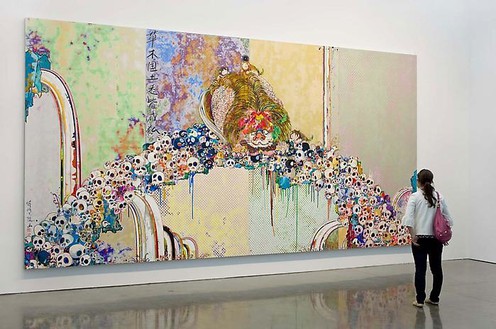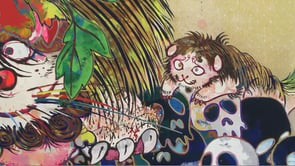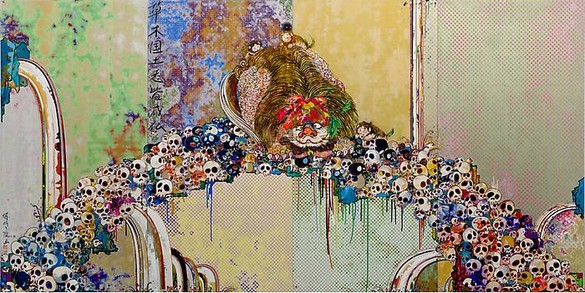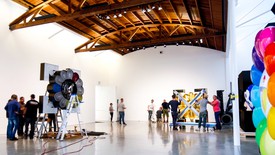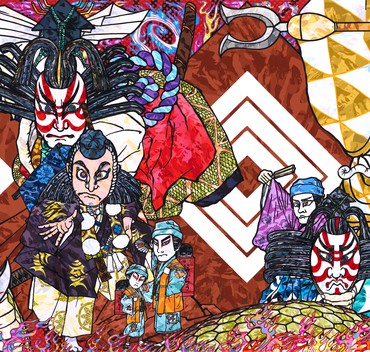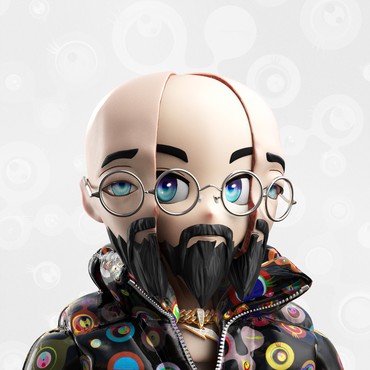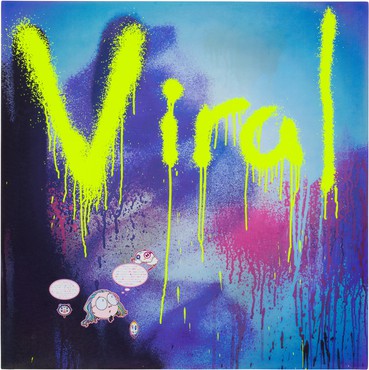About
Gagosian is pleased to present a major new work by Takashi Murakami.
In his distinctive “Superflat” style, which employs highly refined classical Japanese painting techniques to depict a super-charged mix of Pop, anime, and otaku content within a flattened representational picture-plane, Murakami moves freely within an ever-expanding field of aesthetic issues and cultural inspirations. Parallel to the familiar utopian and dystopian themes that feature masses of smiling flowers, elaborate scenes of cartoonish apocalypse, and the ever-morphing cult figures of DOB, Mr. Pointy, Kaikai, and Kiki, he recollects and revitalizes narratives of transcendence and enlightenment, often involving outsider-savants. Mining religious and secular subjects favored by the so-called Japanese “eccentrics,” nonconformist artists of the Early Modern era commonly considered to be counterparts to the Western Romantic tradition, Murakami situates himself within their legacy of bold and lively individualism in a manner that is entirely his own and of his time.
In this new work, Murakami depicts the legend of the Karajishi or “China-lion,” the mythological animal that guards the thresholds of Japanese Buddhist temples, separating sacred precincts from secular areas, averting evil, and promoting happiness and joy. Representations of lions were produced first by Chinese, and then Japanese, artists based on versions from India and Assyria that had been assimilated into Buddhist iconography, without the real animal ever having been seen. Thus these depictions of the exotic animal became increasingly fanciful. The Karajishi was a chosen subject of Shohaku Soga (1730–1781), the prominent iconoclast who mixed Zen and Chinese styles with wilder, virtuoso brushwork and equal measures of irreverent wit and inventiveness, and whose interpretations of the Zen Buddhist ascetic Daruma, another famous outsider, were a key inspiration for Murakami’s 2007 series.
On a large four-panel canvas of staggering intricacy and painterly detail, Murakami depicts the allegory of ritual and survival that attends the development of the Karajishi, who as cubs are thrown off cliff tops by their parents in order to test their strength and resilience. On a macabre bridge built entirely from human skulls, the mature Karajishi sits while its cubs play about, presumably survivors of the Darwinian exercise. The heaps of skulls—each one individually and painstakingly rendered in delirious color combinations—are offset by atmospheric voids of abstract, oscillating hues achieved by the use of traditional patterning and painting techniques including kezuri, whereby the surface of the painting is created by applying then sanding away layer upon layer of paint to produce a rich and varied patina that fuses the refined depths of Japanese lacquer with the alchemy of Warhol’s risqué Oxidation paintings.
Share
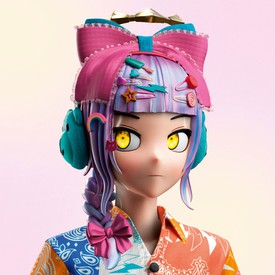
Takashi Murakami and RTFKT: An Arrow through History
Bridging the digital and the physical realms, the three-part presentation of paintings and sculptures that make up Takashi Murakami: An Arrow through History at Gagosian, New York, builds on the ongoing collaboration between the artist and RTFKT Studios. Here, Murakami and the RTFKT team explain the collaborative process, the necessity of cognitive revolution, the metaverse, and the future of art to the Quarterly’s Wyatt Allgeier.
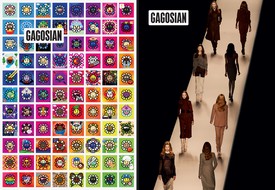
Now available
Gagosian Quarterly Summer 2022
The Summer 2022 issue of Gagosian Quarterly is now available, with two different covers—featuring Takashi Murakami’s 108 Bonnō MURAKAMI.FLOWERS (2022) and Andreas Gursky’s V & R II (2022).
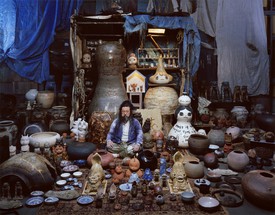
Murakami on Ceramics
Takashi Murakami writes about his commitment to the work of Japanese ceramic artists associated with the seikatsu kōgei, or lifestyle crafts, movement.

In Conversation
Takashi Murakami and Hans Ulrich Obrist
Hans Ulrich Obrist interviews the artist on the occasion of his 2012 exhibition Takashi Murakami: Flowers & Skulls at Gagosian, Hong Kong.
Takashi Murakami at LACMA
In a conversation recorded at the Los Angeles County Museum of Art, Takashi Murakami describes the process behind three major large-scale paintings, including Qinghua (2019), inspired by the motifs painted on a Chinese Yuan Dynasty porcelain vase.
“AMERICA TOO”
Join us for an exclusive look at the installation and opening reception of Murakami & Abloh: “AMERICA TOO”.
